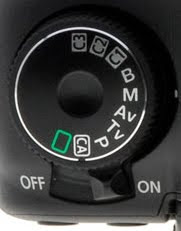Once upon a time, just a few years ago, gadgets were carefully designed to do one thing well. A phone made calls, a PDA took care of your diary, a digital recorder captured audio and a camera took photos. Then, manufactures started to bundle all these applications together. Which is fine… if you like the “jack of all trades and master of none” approach.
As a long time Canon shooter, I was pretty sceptical about the new fad of including video recording technology in DSLR cameras. It seems so unnatural. It reminded me of my first digital video camera that took horrible low-res stills.
I got out of video production in order to take up still photography. It’s much quicker to get a final product and you don’t need a script, shooting schedule and a week of editing to get a final product that runs for 3 minutes. I confess that another reason I flinched at the concept of DSLR video was that it would suck me in and steel my weekends forever.
I finally had a chance to give my 7D video capturing features a solid workout last week. I went to the beach with a 70-200 2.8 IS and 10-22 3.5-4 to shoot some friends during a surfing lesson. If I could summarise the whole experience in one word, it would be “awkward”.
Camera Shake. It felt really unnatural trying to shoot video with a DSLR. Even with a monopod, keeping the image steady was difficult. High-def video is very unforgiving, so any movement gets magnified. I am pretty sure that 1080p is non-interlaced, so you really need to be smooth with your shots. After doing some research online, it seems you would need to spend a small fortune on steady-cam technology or other pro solutions to provide a stable platform from which to shoot DSLR video.
Focus. I must confess that I cannot remember the last time I used manual focus for still photography. The 7D has an awesome focusing system and I usually shoot events (weddings, parties, etc) so it would be impractical to even try and shoot manual. However, if you want to focus during a video shot on a DSLR, it has to be done manually. It is almost impossible to accurately track a moving object when you’re around f2.8 to f4. High definition video is very unforgiving too. Even a little front or back focus will be noticeable.
Recording length restrictions. The 7D has a 12 minute shot length limit. I expect that other DSLR cameras have similar restrictions. So if you want to shoot your kids performance at the school play, make sure you time your scenes well.
Audio. The built in mic seemed to work well. There is a 3.5mm mic input. But this has some kind of auto volume control which means you can’t mix audio off-camera and have it accurately sent to the file. Perhaps the biggest thing I missed was a headphone jack! It was weird not being able to monitor the sound because audio anomalies are something you really need to pick up during a shoot.
File size. Video is fine, but you usually need to edit it. High-def files are huge (around 5.5MB/sec). This means that your computer will die in post-production unless it is juiced up with a recent CPU, plenty of RAM, dedicated fast HDD and probably a video editing card too. This is something a lot of people may overlook when getting excited about shooting video on their new DSLR. Oh, and make sure you have a big stockpile of fast memory cards on hand.
Screen. The screen on a DSLR is in a fixed location. So unlike most dedicated video cameras, you can’t move it into a comfortable position. If you want to shoot low or high, then you need to be willing to get on your knees or find a ladder.
There has been a lot of hype about DSLR video. It is still a pretty new technology and I’m sure there are going to be epic improvements in coming years. Perhaps the main ‘wow’ factor at the moment is the narrow depth of field you can achieve on a DSLR, the huge range of lenses available from the still photography kit and the low light performance of DSLR sensors. But for now, if you want to shoot video… buy a dedicated video camera. If you want to take photos… then a DSLR is the tool for the job.

DSLR Video









